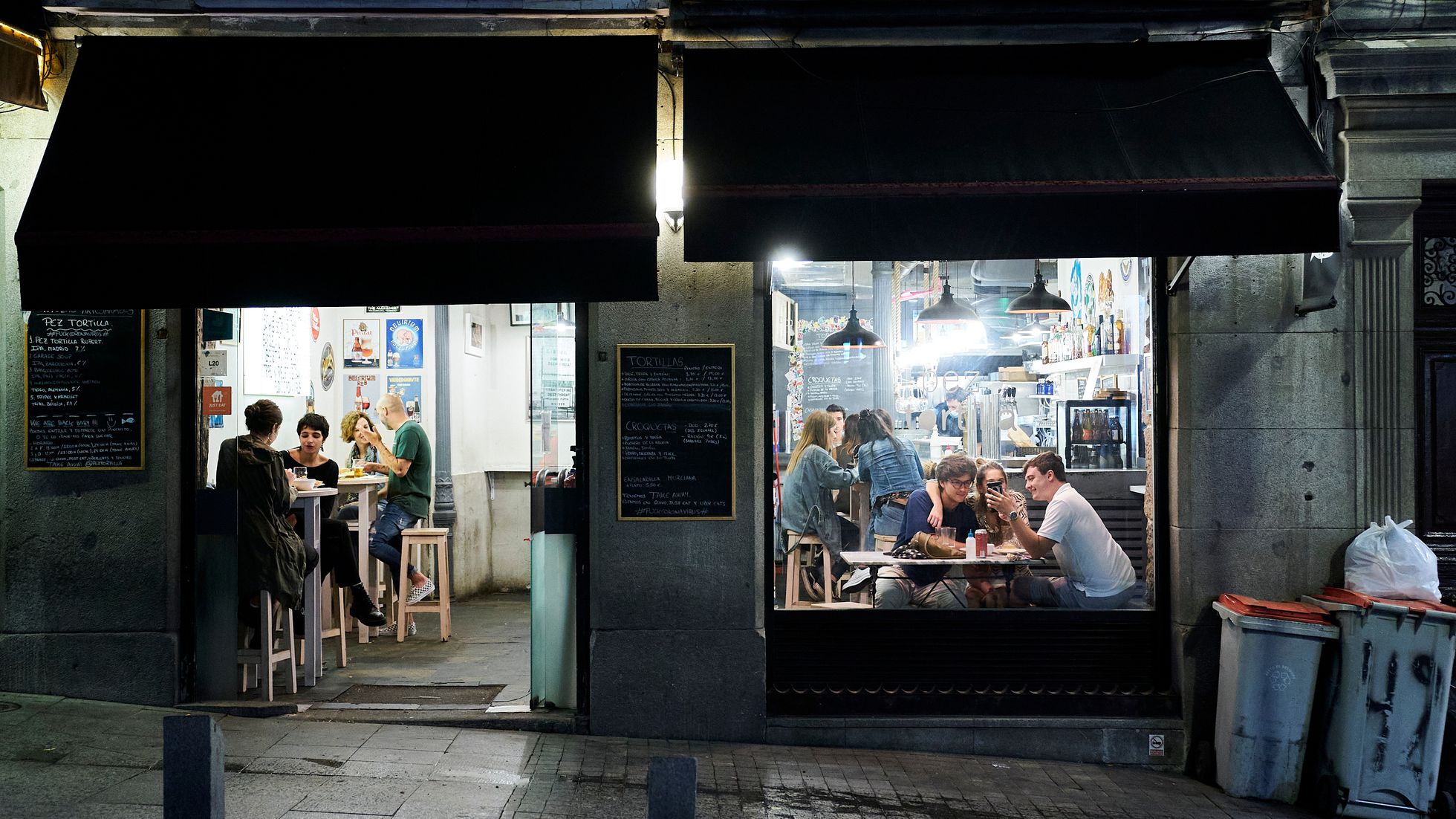The Ministry of Health has released this Friday the ministerial order that compiles the restrictions for nightlife and hospitality in the autonomous communities. The document arises from the measures agreed with the communities and has entered into force tonight, once it has been communicated to the autonomies.
Until when will it be in force? The ministerial order states that “until the end of its validity is approved by the Minister of Health.” As specified by Health, its plans indicate that it will be in force until 70% of the population is vaccinated and all those over 50 have been fully immunized, that is, predictably until the end of this summer.
The ministerial order, in any case, does not clarify all doubts. To begin with, because several communities continue to insist that it cannot be enforced, because the order is drawn up from an inter-territorial council where the measuresthey were not agreed unanimously. On the other hand, because the ministerial order has a complicated wording that leaves certain gaps.
For example, in the case of the hospitality industry, it indicates that the restrictions between alert levels 1 and 4, which reduce capacity and opening hours, will be those that govern according to a document that was previously agreed in the inter-territorial council, and that originally they were only recommendations.
And, in addition, it adds that this text “establishes that the measures can be adapted and contextualized to each autonomous community and territory, according to the evolution of the epidemiological situation.” A ministry spokesman says that does not imply that the autonomies can change the restrictions, but the text does not clarify what he means by “adapting.”
Catalonia, Madrid, Andalusia, Galicia, Murcia and the Basque Country do not accept that the traffic light and the measures associated with each strip are mandatory , so they refuse to comply with them and threaten to go to court. These are the detailed measures for nightlife and hospitality depending on the level of risk and other essential issues raised by the approved restrictions.
Nightlife: discos and cocktail bars
• Level zero or one (Accumulated Incidence between 25 and 50 cases per 100,000 inhabitants at 14 days, among other parameters)
Communities in this range : All those that are in level one: Galicia, Extremadura, Cantabria, Navarra, Valencian Community, Murcia, Balearic and Canary Islands. There is no community at level zero.
– The premises can be opened until 2 in the morning, expandable at 3.
– It should be consumed sitting down and keeping the distance of 1.5 meters between tables.
– Maximum capacity indoors: 50%, with a maximum of six people per table.
– Maximum capacity outdoors: 100% of the tables allowed, with a maximum of 10 customers per table.
• Level two (AI between 50 and 150 cases per 100,000 inhabitants at 14 days)
Communities in this range : Asturias, Aragon, Catalonia, Castilla y León, Madrid, Castilla-La Mancha and Andalusia.
If the complementary indicators (occupancy of hospital beds and ICU and positivity rate) are “at a favorable level”, the communities may open nightlife venues, provided that they comply with the recommendations contained in the document Coordinated response actions for control of the transmission of COVID-19 , which become mandatory. Implying? In this case, all restrictions are maintained as in level one, except the allowed capacity indoors, which is reduced to 33%.
• Level three and four (AI greater than 150 cases per 100,000 inhabitants at 14 days) .
Communities in this range: Basque Country and Navarra.
Nightlife venues, such as discos and cocktail bars, will not be able to open in regions on levels three and four.
Hospitality: restaurants and bars
• Zero level
Communities in this range: None.
– An indoor capacity of 50% is allowed, expandable up to 60%. Maximum per table, six people.
– Allowed the capacity on the terrace at 100%. Maximum per table of 10 people.
– End of service at 24.00 and closing at 1 in the morning.
• Level 1
Communities in this range : All those that are in level one: Galicia, Extremadura, Cantabria, Navarra, Valencian Community, Murcia, Balearic and Canary Islands.
If the complementary indicators are “at a favorable level”, the communities that are above level 0 of risk due to the coronavirus will be able to open the premises, provided that they comply with the recommendations contained in the document Coordinated response actions for the control of transmission of COVID-19, which become mandatory.
– Indoor opening with 50% capacity. Tables for a maximum of six people.
– Bar consumption prohibited.
– The capacity on the terrace can be 100% occupied with tables of a maximum of 10 people.
• Level 2
Communities in this range : Asturias, Aragon, Catalonia, Castilla y León, Madrid, Castilla-la Mancha and Andalusia.
– Interiors with a third of the capacity and six people per table.
– Exteriors with a capacity of 75% and six clients per table.
– Bar consumption is prohibited.
• Level 3
Communities in this range: Basque Country and Navarra.
– Closed indoors.
– Exteriors with a capacity of 75% and six clients per table.
• Level 4
Communities in this range: None.
– Closed indoors.
– Exteriors with a capacity of 50% and four people per table.
The keys to entry into force and legal doubts
What does the approved traffic light establish in the Public Health Commission?
The so-called risk semaphore establishes four levels for territories with more than 10,000 inhabitants (very high, high, medium and low), in which each zone enters based on parameters such as the virus transmission rate (more than 250 cases per 100,000 inhabitants at 14 days is equivalent to very high risk, and between 25 and 50 cases, to low risk) or the situation of the hospitals (percentage of occupied beds or saturation of intensive care units).
Each of the levels is associated with a series of rules to be implemented, the severity of which increases as the level rises. Communities at low risk will have more flexible measures than those at high risk, with stricter guidelines.
The decision agreed between Health and the communities implies that, even in the best epidemiological scenario —when the incidence is less than 25 cases per 100,000 people—, nightlife has to close at 3:00 and the maximum number of clients per table at the terrace of a bar is 10.
Is it a simple guide or a mandatory rule?
That is the knot of the battle between Sanidad and the communities that refuse to abide by it. Until now, the traffic light was considered a guide, an indicator for each community to take measures associated with leisure, hospitality and mass events.
But the ministry emphasizes that once the statement of coordinated actions is published in the BOE, which contemplates specific measures in nightlife, hospitality and mass events, these restrictions will be mandatory when the communities adapt it to their regulations .
Those that continue to be recommendations are the guidelines for other spaces contemplated by the traffic light, such as recreational centers for the elderly, recreational game rooms or student residences, among others.
Health insists that it is a fusion of previous norms already in force, modified after joint work between 13 communities and the Darias department itself.
The acting president of Madrid, Isabel Díaz Ayuso, already said this Thursday that with her “they do not have” to apply the restrictions, since, with these new protocols, Madrid would have to change its closing hours in hospitality, return to a maximum of six people per table on terraces, close or reduce to a third the capacity of the interiors of bars and restaurants, and could not open the nightlife or have hosted the friendly Spain against Portugal this Friday at the Wanda Metropolitano . Andalusia and the Basque Country have also made it clear that they will not abide by the decision.
In addition, the wording of the order in relation to hospitality indicates that “the measures can be adapted and contextualized to each autonomous community and territory, according to the evolution of the epidemiological situation” and refers to a document where it says verbatim:
“The decision on what measures and when to apply them will be taken by the Autonomous Communities ”. In addition, although Health proclaims the obligation, the order does not include any sanctions or coercive regime.
At what point are the data for Madrid, the Basque Country and Andalusia and in what traffic light are they now?
All three have an incidence of over 150 cases per 100,000 inhabitants in 14 days: Madrid has 154 cases per 100,000; Andalusia, 182.5; and the Basque Country, 194.
But the risk at the traffic light is measured after analyzing several indicators – in addition to the incidence, the positivity of the diagnostic tests and the hospital and ICU occupancy, among other parameters – and the risk situation is different: Madrid and Andalusia are at medium risk or alert level 2; The Basque Country, for its part, is at high risk or level 3.
What does it mean to be at high or medium risk?
The high risk implies serious restrictions on nightlife, restaurants and sporting and musical events. Nightclubs and nightclubs must remain closed and mass events may not be held; while the catering businesses must keep the interiors closed and on the terraces they may have a maximum capacity of 75% and no more than six people per table.
At medium risk, the terraces may have the same capacity, and for outdoor events (such as attending football stadiums or other open pitches), the maximum capacity will be 2,500 people and, if it is possible, independent sectors of no more than 500 attendees will be established. It will not be possible to exceed 30% of capacity and the surface per person will be three square meters.
From when will the new rules apply?
Since this Friday, that the ministerial order has been communicated to the autonomies.
Health maintains that what is approved is a minimum agreement, so that the communities will be able to toughen the measures, but not relax them, although the order does not say that.
The Government has asked the regional authorities to wait to read the global agreement before deciding, as Madrid and Castilla y León have announced, whether or not to appeal the rules before the courts and if they request precautionary measures, such as the suspension of their application until let the judges decide. The order notified in the afternoon of this Friday specifies that the norms will come into force when they are communicated to the autonomous communities and cities.
Can communities that reject the traffic light rebel?
This is the great legal doubt, which is linked to the question of whether or not the measures are mandatory, and which can end up leading to a legal conflict between Health and some communities. There is no clear jurisprudence, although the Supreme Court has accepted the binding nature of these agreements in resolutions issued in recent months, most of them adopted during the validity of the state of alarm.
Madrid insists that for them to be mandatory norms they must be approved unanimously by the Interterritorial Health Council, although so far it has ended up complying with the mandatory resolutions voted only by a majority, despite opposing it.
The doubts arise because the legal nature of the interterritorial council is not regulated, although the Executive defends that it is comparable to the Sector Conference, the usual body of cooperation between the State and the communities for most matters and that it does have a clear regulation in the Law of the Legal Regime of the Public Sector, of 2015.
And article 151 of this norm establishes that the agreements of this body are not “mandatory” for the communities that have voted against, except when the General State Administration “Exercise coordination functions.” In that case, the rule adds, the agreements will be “mandatory for all public Administrations that are members of the Sector Conference, regardless of the direction of their vote”

Leon Cooper was born and raised in Vancouver. As a Reporter for WideWorldMag, Leon has contributed to several online publications including Dream House Publications and Granville Magazine. In regards to academics, Leon has got a Post Graduation Degree in Department Of Archaeology from The University Of British Columbia. As a Reporter for WideWorldMag Leon Covers International Topics.

